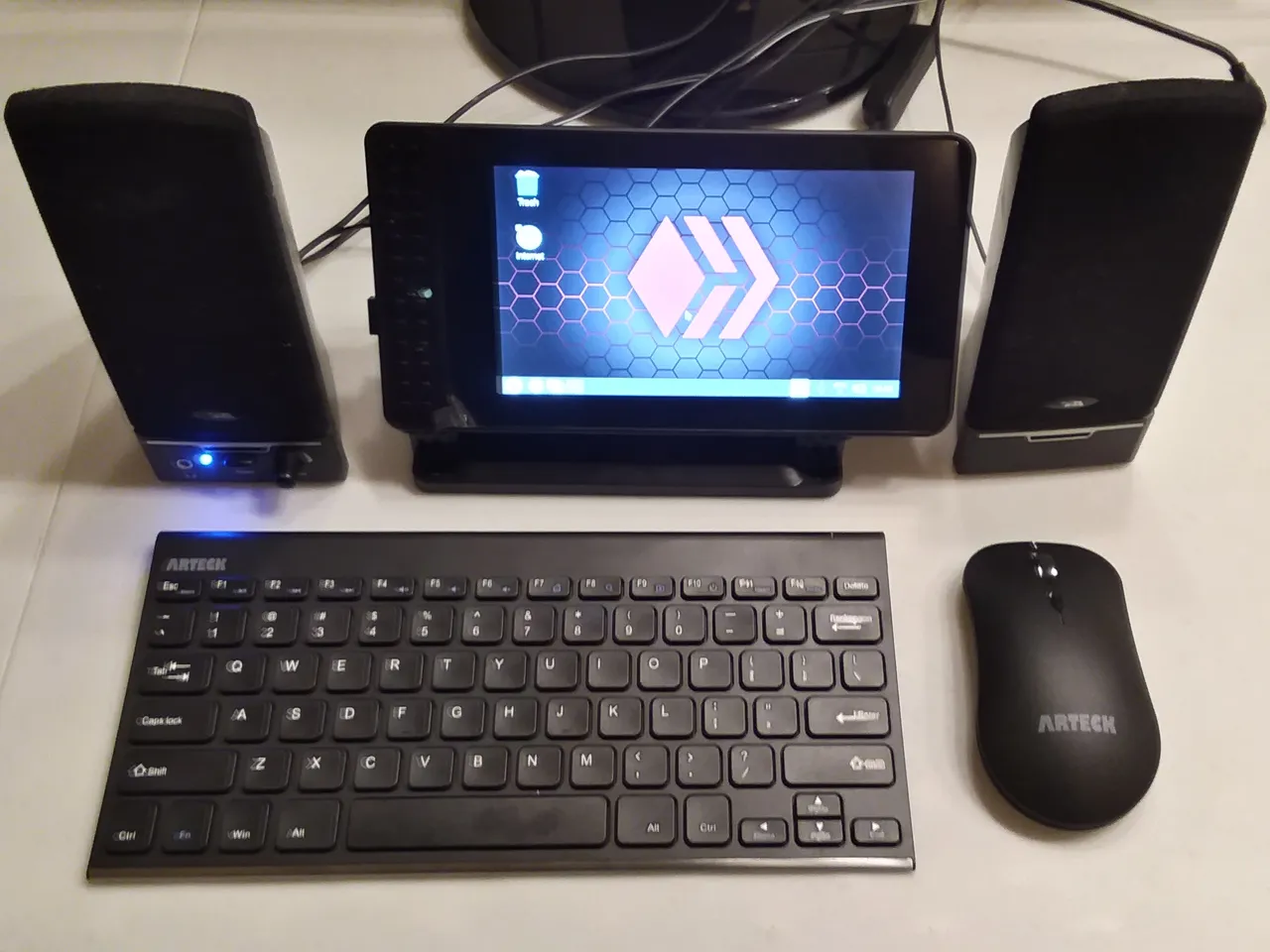
Raspberry Pi experimentation continues! I splurged on the SmartiPi Touch 2 case to go with the official touchscreen display and camera module in an effort to build a portable PC with my Raspberry Pi 4. I could just buy a laptop or tablet, of course, but this is way more fun!

This particular case has some pros and cons. Once I found the online instructions, installation wasn't too bad. I got it to work on the first attempt, so I consider that a win. I am still dabbling in the configuration settings to use more of the touchscreen features, but I wanted it mainly as a monitor anyway. It includes three plates for the camera side. One is solid, one has a simple camera lens hole, and the third one I installed has studs for LEGO bricks. I have no idea why they included the others, to be honest.
I like the way this case is designed to allow the use of a HAT (Hardware Attached on Top) instead of linking to the monitor as a HAT like the default design indicates. It has covers for a solid back or a fan mount if no HAT is used on the Pi inside. There were cables to split a single power cable to the screen and Pi, one with two micro USB ends for the Pi 2 or 3, and one with a USB-C plug on one tail for the Pi 4. All told, it's reasonably versatile.
So far, my only complaint is the way the micro USB card is buried inside. One would need to boot via USB to play with alternative OS setups as I intend, or else almost completely disassemble the system.
Or just buy another Pi. Let's be honest, that's a viable option. And I still have the 3D-printed monitor mount that is now unoccupied.

The keyboard and mouse were purchased specifically for the Raspberry Pi. I wanted a slim, compact wireless option that used one USB receiver for wireless connection. I considered some options from Logitech, because their mice have been my usual budget-friendly but decent-quality choice. However, I went with this keyboard and mouse combo instead. I had no idea how well Linux would like the oddball peripherals, but it linked almost instantly. Security and durability are unknown, but it works fine so far.
It feels like a laptop keyboard on a thin metal plate, but since that is what it is, I am not surprised. Ergonomics are nothing special. In fact, the keyboard has no ergonomic consideration whatsoever. But it is working well enough to type this right now. The mouse is also quite basic. It's a lot flatter overall than the Logitech I had been using to test the system before, though, so portability is promising.
I also like the way both use USB to charge internal batteries, but this makes me leery of long-term reliability. Two of my Logitech mice have died due to wear and tear. Gaming and drafting are both hard on the mouse button switches. The rest are still going strong, and despite heavy use, only needed new batteries a couple times per year. We'll see how these go on the long haul.

The speakers are an old set I got on clearance at some office supply store a long time ago. They work. Nothing fancy.

I have tested this as a tabletop gaming tool. I have my digital module open and take notes in the notepad. More screen real estate would be handy, but this takes up very little tabletop real estate, especially since I don't need the speakers there. It fits behind my game master screen nicely, too.
Honestly, this gizmo will definitely end up costing me more than a tablet or entry-level laptop in the end, but then again, those products don't offer themselves as open-source hobby tools. They're just consumer electronics designed to be disposable. And these days, how am I supposed to trust Microsoft, Google, and Apple, anyway? This is something I can use indefinitely, reconfigure to suit my whims, and experiment to my heart's content. Updates and code changes are on my terms. And that is all good news to me.
Just one question for my readers, though: Can you recommend a good battery pack to make this thing truly mobile?

